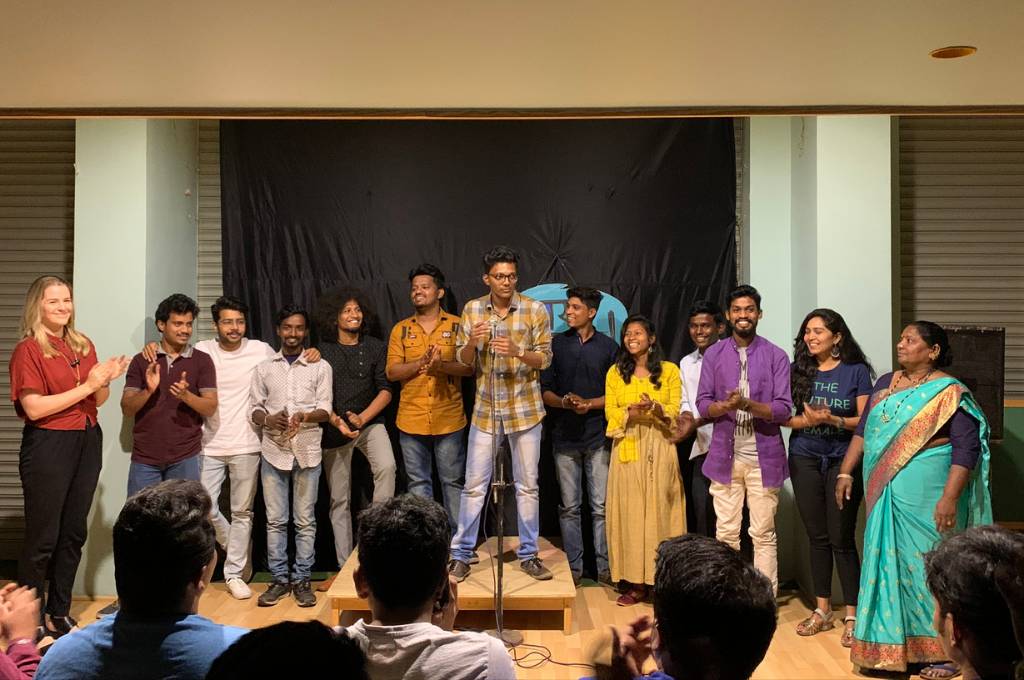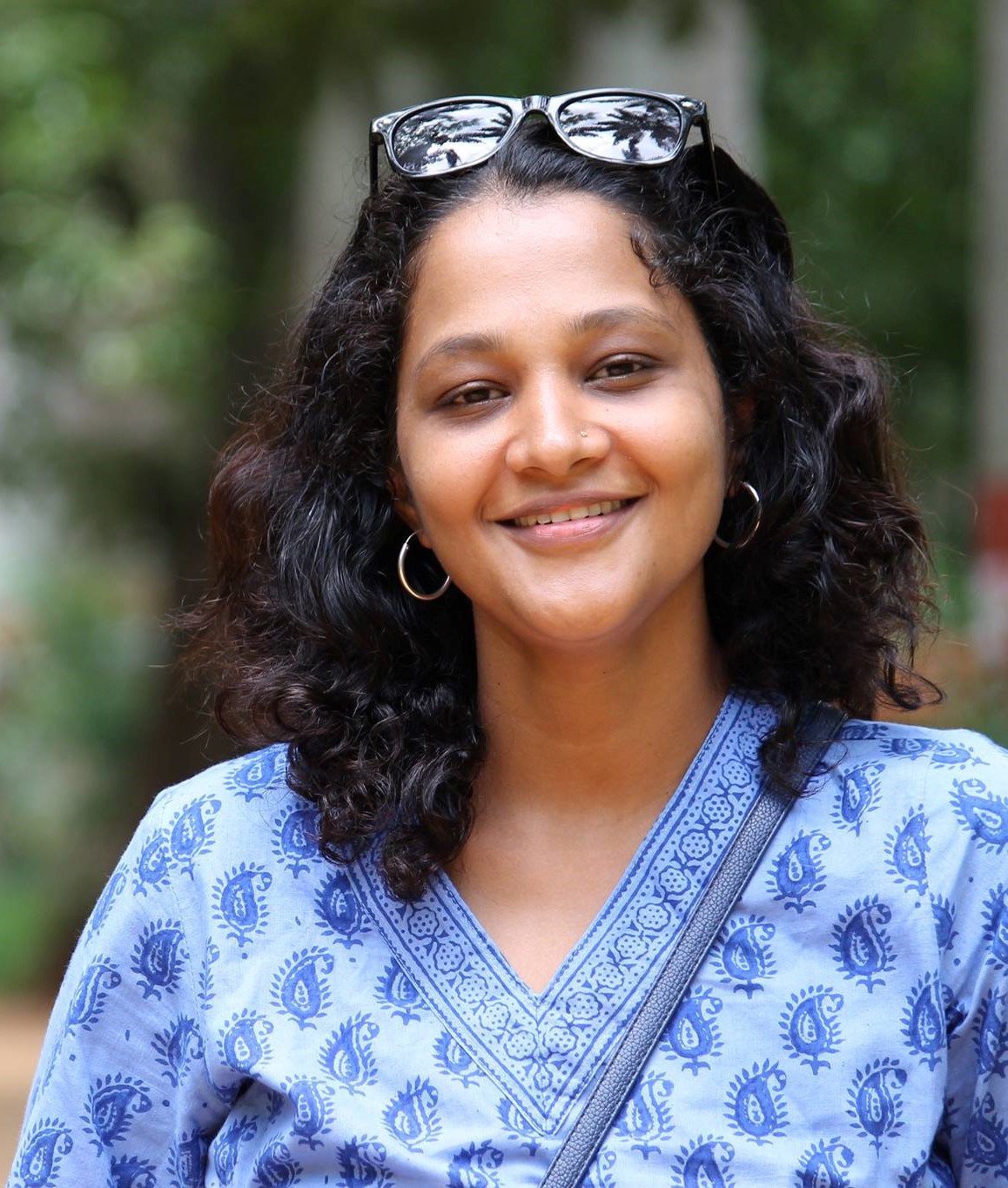Art and activism have always been closely linked. Think of Kabir and his dohe, Basavanna and his vachanagalu, Manto and his writing, Faiz and his poetry. The list is endless. Both create space to speak truth to power. But most activists—and powerful philanthropic donors and funders especially—have tried to instrumentalise arts to communicate a particular message. For instance, in most cases, art in its various forms, is only used as a means to an end. The end is information awareness in communities, or behaviour change communication, where we want a particular desired outcome in areas as diverse as education, healthcare, and gender-based violence. Examples of these would be street plays to overcome the issue of vaccine hesitancy, TV shows to change social norms, painting as therapy, and so on.
Rather than strengthening the form and practice of art such as theatre, poetry, music, the emphasis inevitably is on how the medium can be used to convey the message that the nonprofit or donor wants to communicate. However, the success of a recent comedy initiative, Kay Boltay (Say what?), an 18-month long Marathi comedy programme, organised by digital platform BhaDiPa, arts and media collective Maraa, and the Fund for Global Human Rights in India, demonstrates that instrumentalisation is not necessary—neither for powerful art to emerge, nor for the social messages art inherently carries.
Kay Boltay was born from the realisation that although stand-up comedy is more popular than ever in India, it is dominated by men hailing from upper or middle caste/class, which does not reflect the country’s diversity or the lived reality of most people. To tackle this, BhaDiPa, Maraa, and the Fund held open auditions across four cities in Maharashtra in collaboration with local artists and groups. At these locations, an audition video was played inviting people to send in their video clips to us. Sixteen finalists were selected, including a range of people from farmers and students to sex workers and government employees. By creating a platform for underrepresented voices, the organisers hoped to uncover the struggles and triumphs in peoples’ real-life stories.

After auditions and training, the group went on a 16-stop tour of Maharashtra, accompanied by a video crew. It is safe to say the experiment found positive traction with the larger public. More than that, though, Kay Boltay’s success offers valuable lessons for how the philanthropic community should approach working with the arts.
We do not think of the multiple ways in which identities coalesce and the complexity of its intersections.
There is usually a tendency among grantmakers to design programmes in ways that target the community based on a singular identity, such as women, young people, the differently abled, sexual minorities, or Dalits. We do not think of the multiple ways in which identities coalesce and the complexity of its intersections. In projects that use arts, we usually predetermine the message and the medium without paying attention to or investing in the ways in which the community itself can determine the message and the form.
Here is what we learnt about how donors and funders can support initiatives that raise artists’ voices to reach new audiences.
1. Trust the process
In any creative initiative, the process itself is ultimately more important than the message. If there is space and opportunity created for friendships to ferment, confidence to surface, and thought partnerships to emerge, it is likely that the process will sustain and reinvent itself much after the message has faded away.
A majority of the Kay Boltay participants had never performed in front of a crowd or had only performed among people that they knew or trusted. This meant that before we could start talking about comedy, we had to work through exercises that helped the participants learn more about each other and gain the confidence to find and articulate their unique experiences. Activities that focused on loosening the body and becoming less self-conscious and debates on topical issues were planned with the intent of breeding familiarity as well as incentivising individual opinion. Many of the exercises used in the training concentrated on creating a safe space, fostering a spirit of respect, and understanding and inculcating the humility to listen and learn from each other more intently. For example, we spoke about the difference between punching down (making fun of persons less powerful than you in socio-political contexts) and punching up, and how this distinction can normalise or disrupt power hierarchies and stereotypes.
By the end of our training sessions together, participants had become comfortable being their vulnerable selves with the others in the group.
2. Mentorship is a two-way street
Each of the participants was paired with a more experienced stand-up comedian. Though this certainly helped the amateur comedians refine their technique and skills, the process of learning was enriching for the mentors as well.
By getting to know each other, the mentors and mentees were able to form open relationships.
The mentors had a chance to interact with people they never otherwise would have met, from different towns, backgrounds, and walks of life. This helped introduce the mentors to a world of new experiences.
“During the lockdown, I had started to put out comedy sketch videos. My mentor called me up to say that he too was contemplating making these, and we discussed my own experience of production,” shared one participant.
By getting to know each other, the mentors and mentees were able to form open relationships, which allowed for critique and encouragement to be received with equal measure.
3. Diversity is strength
A Kay Boltay show differed from a regular open mic or comedy gig, because each of the performers was different from the other and so was their content—from the dialect of Marathi, to how different they looked, or the stories that they narrated. The diversity on stage reflected the diversity of the audience, which most often is not the case for mainstream arts and media performances.
The diversity also helped disrupt the formation of a normative standard of performance and perception building of what the audience likes and dislikes. The audience research clearly showed that this was the first time that rural and peri-urban audiences were exposed to stand-up comedy that spoke to their circumstances and was not about big town Mumbai.
4. Authenticity is key
Over the course of the project, participants were never asked to write and perform about social justice issues.
Our working assumption was that if themes of class, caste, or gender differences or hypocrisies of social perceptions around them existed in the stories that the aspiring comedians wanted to tell, those messages would rise to the surface. And, they did.
Without prompting, participants chose to discuss everything from the inferiority complex of being dark skinned and parents preferring boys, to the redundancy of rehabilitation programmes of sex workers and the hypocrisy of the sacrosanct status of virginity. Each of these stories stemmed from personal experiences making it more relatable and authentic to the experience of the audience as well as the performer.
5. It won’t always go to plan
The programme had its fair share of challenges. Itineraries needed to be changed to adhere to election codes, disrupting and prolonging the entire project. In a couple of venues, we hardly had more than 10 people in the audience, demotivating not only the artists but also the organisers. Public transport was not always reliable to arrive on time, participants fell sick, and accommodation was not always comfortable. But overall, if we had to do this all over again, we would still travel to every part of Maharashtra. The participants not only gained the experience and confidence to perform in front of diverse audiences, but also got a sense for what kind of event preparation and promotion ends up getting more people through the door.
Two other elements that we would incorporate into the design in future work is training in brand building and digital presence and teaching the tricks around networking and monetisation of content.
6. Reimagine how you measure success
A common question that people ask us is whether audience changed their perceptions after attending the shows. We think not—and that is okay.
Through our interactions, we found that audience in small towns related more to the content because it felt like their own experiences were being captured. One attendee remarked, “I never thought that someone who looked and dressed as ordinarily as me, can be a stand-up comedian.”
Success is not always about the number of page views, tickets sold, or people reached. It is also about reimagining who has the power to speak up, and what they use that power to say.
One of the Kay Boltay participants now produces weekly videos, has a growing following of more than 45,000 people, and performs in front of large crowds. A young man who last year told us that he did not have any friends in his village is contesting the local council elections. Another participant has been on online shows hosted by US and UK comedy clubs.
Their journey, it seems, has only just begun.
—
Know more
- Meet the Kay Boltay performers in this documentary and catch some of the performance highlights.
- Learn how the interaction of protest and play helps build a better world.
- Read about some new forms of protest art from around the world.





